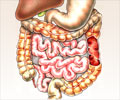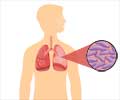Rifapentine Medication Information
Learn everything you need to know about Rifapentine-pronunciation, uses, dosage guidelines, indications, and when to take or avoid it.
Get up-to-date information on side effects, precautions, warnings, and proper storage to ensure safe usage.
Explore Rifapentine brand names commonly used in India and internationally, along with detailed pricing information. Consult your healthcare provider for tailored medical advice.
Generic Name : Rifapentine Pronunciation : RIF-a-PEN-teen ICD Code : Y40.6 Therapeutic Classification : Anti- TuberculosisBrand Names or Trade Names of Rifapentine
International :
Priftin
Why is Rifapentine Prescribed? (Indications)
This medication is an antibiotic, prescribed for tuberculosis (TB). It works by killing or stopping the growth of TB organisms.When should Rifapentine not be taken? (Contraindications)
Contraindicated in patients with blood disease porphyria, and hypersensitivity.What is the dosage of Rifapentine?
PO- Initial Phase (2 Months)- The recommended dose is 600 mg (4 x 150 mg tablets) twice weekly for two months.Continuation Phase (4 Months)- The recommended dose is 600 mg once weekly for 4 months in combination with isoniazid or an appropriate antituberculosis agent.
How should Rifapentine be taken?
It comes as a tablet to take by mouth, with food.What are the warnings and precautions for Rifapentine?
• Caution should be exercised in patients with history of liver problems, abnormal liver function tests, HIV, severe diarrhea due to prior administration of any antibiotic, any allergy, during pregnancy and breastfeeding.• It may cause dizziness, do not drive a car or operate machinery while taking this medication.
• Avoid long-term use of this medication; otherwise it may cause secondary infection.
• Monitor liver function, complete blood cell counts, platelet counts, and bilirubin levels regularly while taking this medication.
What are the side effects of Rifapentine?
Severe Effects - Development of cancer cells.Most Common - Blood in urine, loss of appetite, back pain, joint pain, and muscle pain.
Genitourinary - Urethral disorder, painful urination, kidney inflammation, urinary incontinence and urination disorder.
Metabolic - Increase or decrease in weight, increase in BUN, alkaline phosphatase levels, increase or decrease in blood minerals.
Blood - Lymphocytosis, blood clot, and anemia.
Body as a Whole – - Abnormal laboratory tests, swelling in the legs, weakness, swelling face, abscess, and uneasiness.
Skin - Skin ulceration, hives, dry skin, boil, skin discoloration, purple discolorations on the skin, fungal infection, nail disorder, hair loss, and rash.
Respiratory - Abnormal breath sounds, pneumonia, fluid in the lung, runny nose, difficulty in breathing, sinusitis, increased sputum , upper respiratory congestion, asthma, chest x-ray abnormal and throat swelling.
Gastrointestinal - Tooth disorder, stomach inflammation, lip inflammation, dry mouth, inflammation of pancreas, salivary gland enlargement and bowel inflammation.
Infectious disease - Fungal, parasitic and protozoan infection.
Liver - Liver enlargement and jaundice.
Central Nervous System - Drowsiness, seizure, voice disorder, increased muscle tone, brain inflammation, migraine headache, stupor, anxiety, confusion, drug abuse, aggressive reaction and agitation.
Musculoskeletal - Muscle pain, bone fracture, muscle weakness and muscle spasm.
Heart - Fainting, fast heart rate, palpitation and low blood pressure.
Genitourinary - Penis disorder, vaginal inflammation, vaginal bleeding, cervical smear test positive, white discharge, mastitis male and prostatic disorder.
Eye and ENT- Loss of taste, ear disorder, ear inflammation, ear pain, tympanic membrane perforation, eye pain and eye abnormality.






